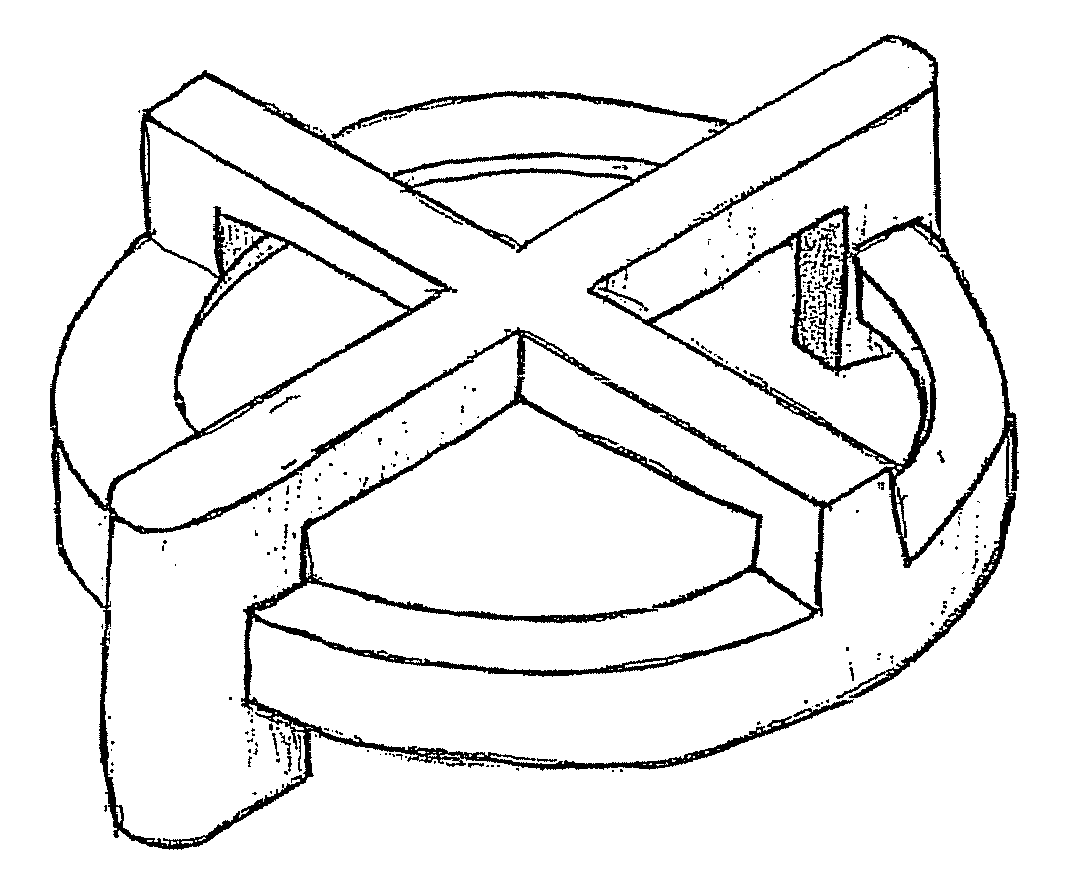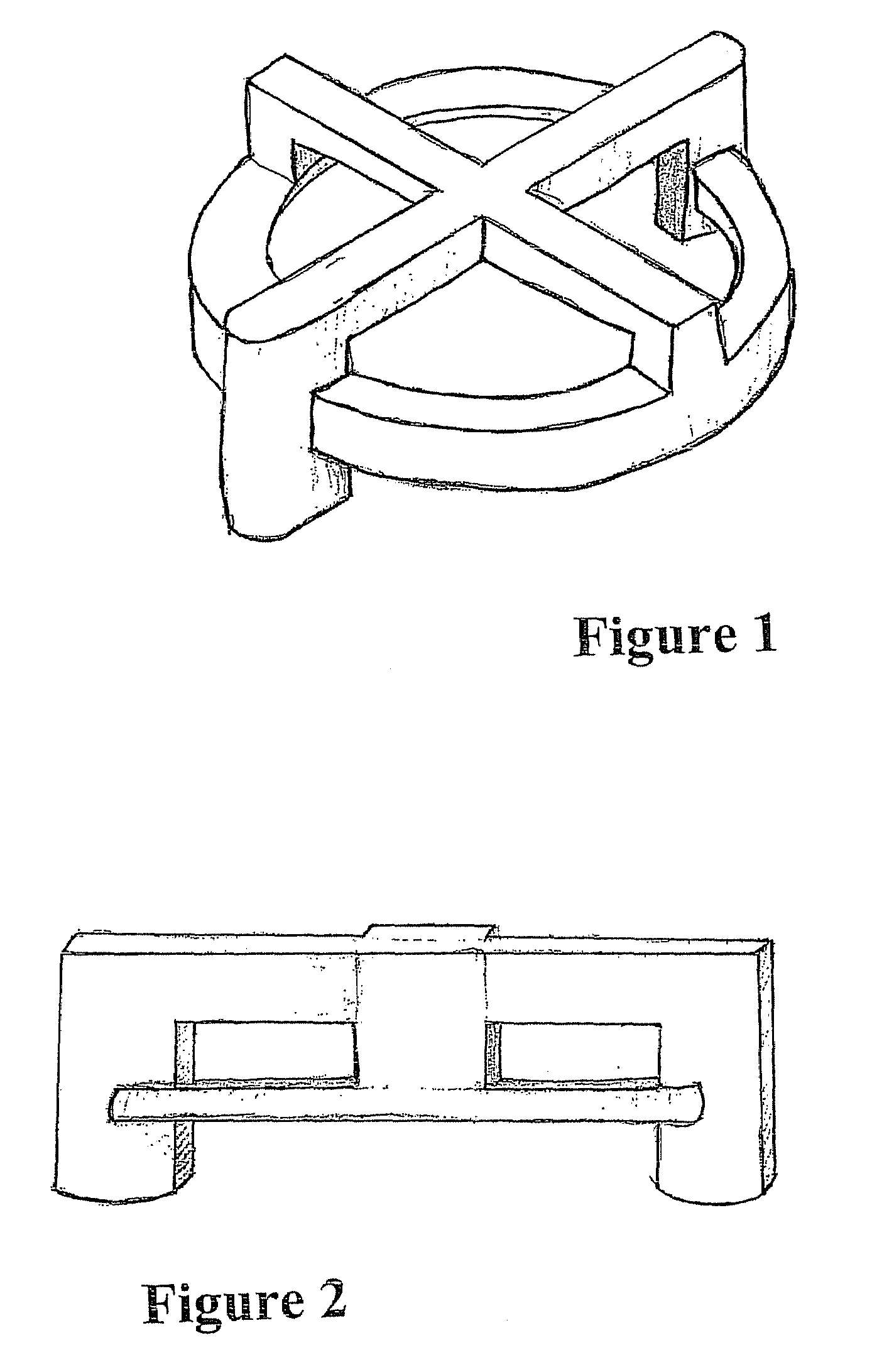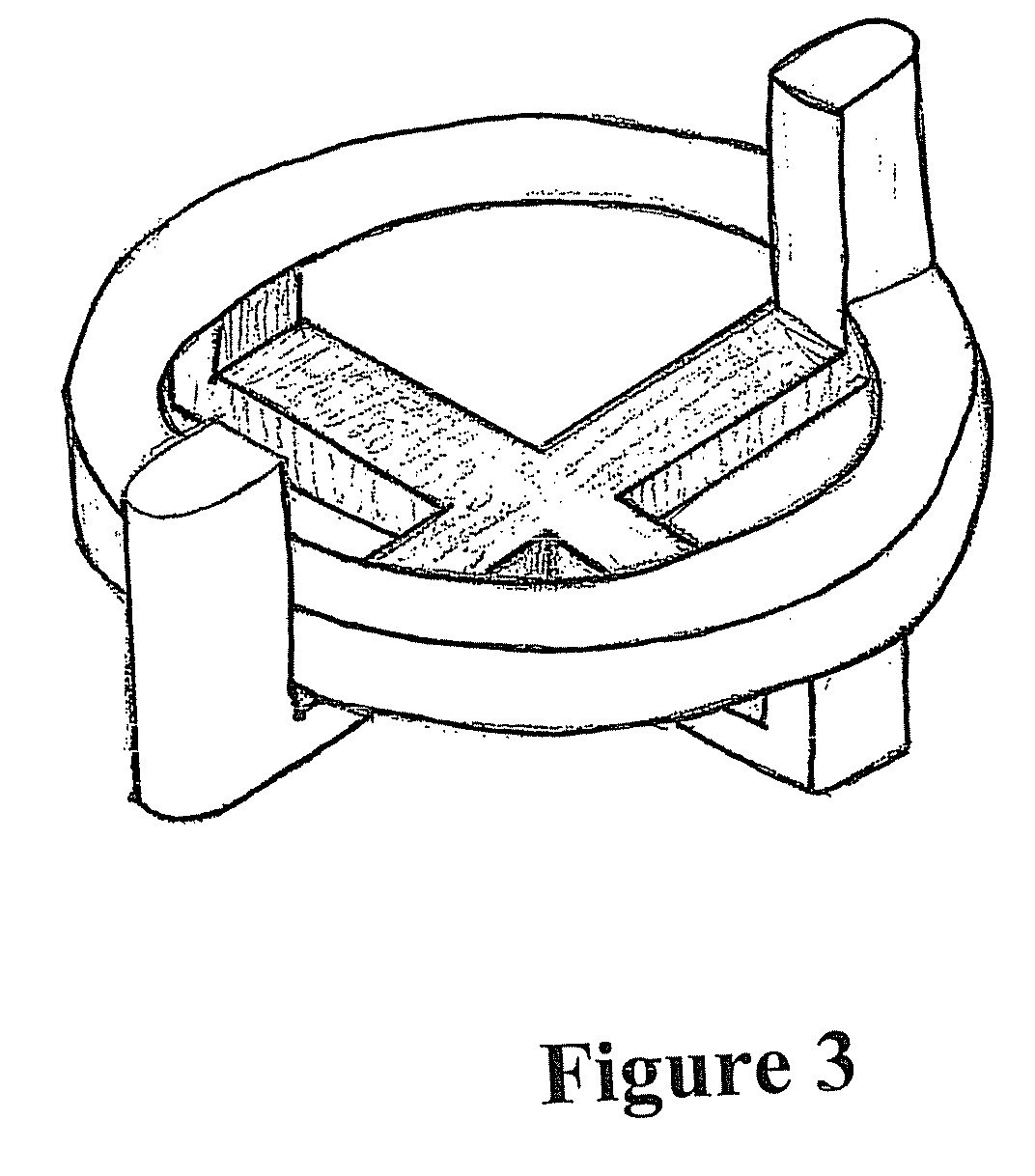Low-obscuring tile installation spacer
a tile installation and low-obscurity technology, applied in the field of tile installation, can solve the problems of difficult handling of spacers, difficult use of tape measures or other devices, and inability to accurately locate tiles,
- Summary
- Abstract
- Description
- Claims
- Application Information
AI Technical Summary
Benefits of technology
Problems solved by technology
Method used
Image
Examples
example
[0055]The subject matter of this disclosure is now described with reference to the following Example. This Example is provided for the purpose of illustration only, and the disclosure is not limited to this Example, but rather encompasses all variations which are evident as a result of the teaching provided herein.
[0056]One example of a device described herein is illustrated in FIGS. 1, 2, and 3. In this embodiment, the base is disk-shaped and has a large concentric circular window, which is a substantially concentric void in the central portion of the base. The device has a straight spacer affixed to one face of the base, and a cross-shaped (corner) spacer is affixed to the opposite face. The window extends through the straight spacer leaving two block-like structures, each having a rounded outer edge extending across the remaining surface of the base. The corner spacer bridges the window in a plane parallel to but not coplanar with the base. The base and spacers are monolithic, an...
PUM
 Login to View More
Login to View More Abstract
Description
Claims
Application Information
 Login to View More
Login to View More - R&D
- Intellectual Property
- Life Sciences
- Materials
- Tech Scout
- Unparalleled Data Quality
- Higher Quality Content
- 60% Fewer Hallucinations
Browse by: Latest US Patents, China's latest patents, Technical Efficacy Thesaurus, Application Domain, Technology Topic, Popular Technical Reports.
© 2025 PatSnap. All rights reserved.Legal|Privacy policy|Modern Slavery Act Transparency Statement|Sitemap|About US| Contact US: help@patsnap.com



